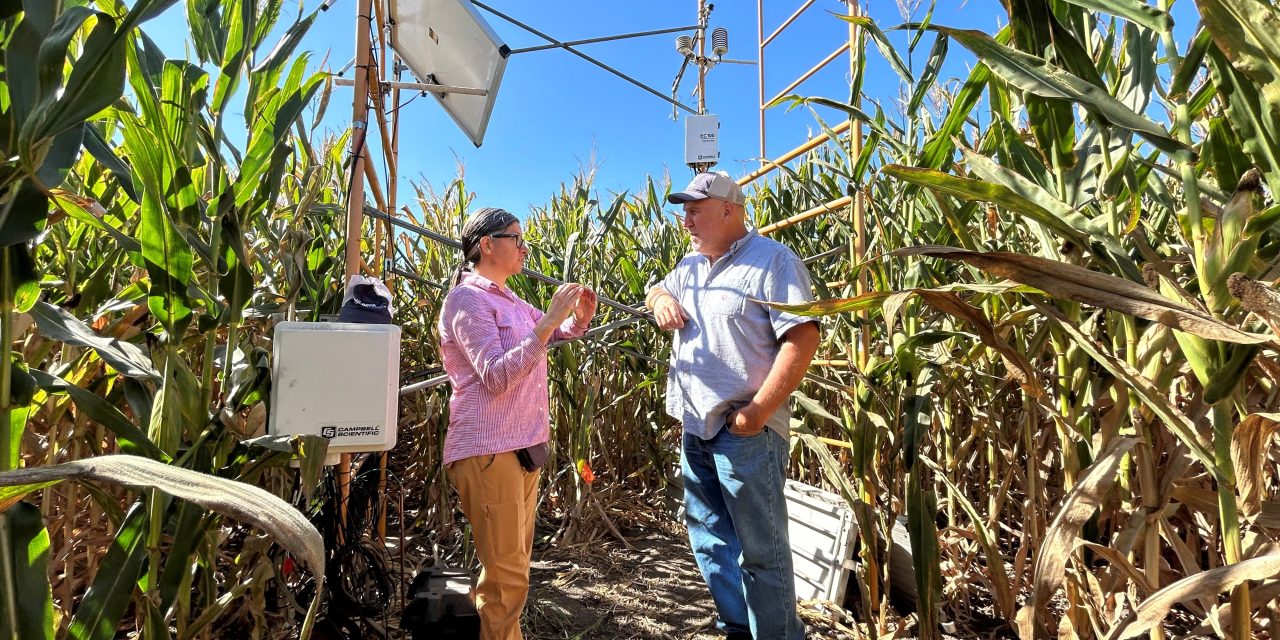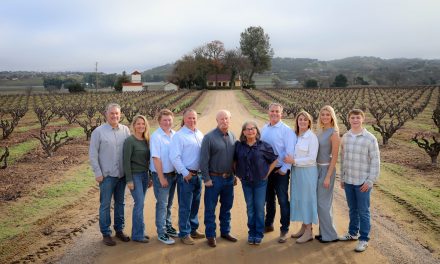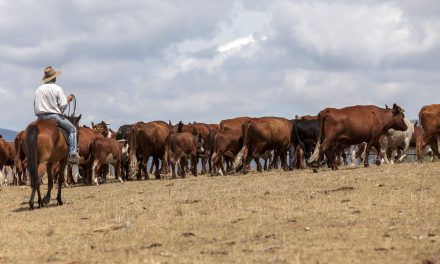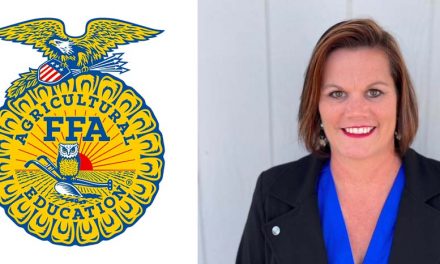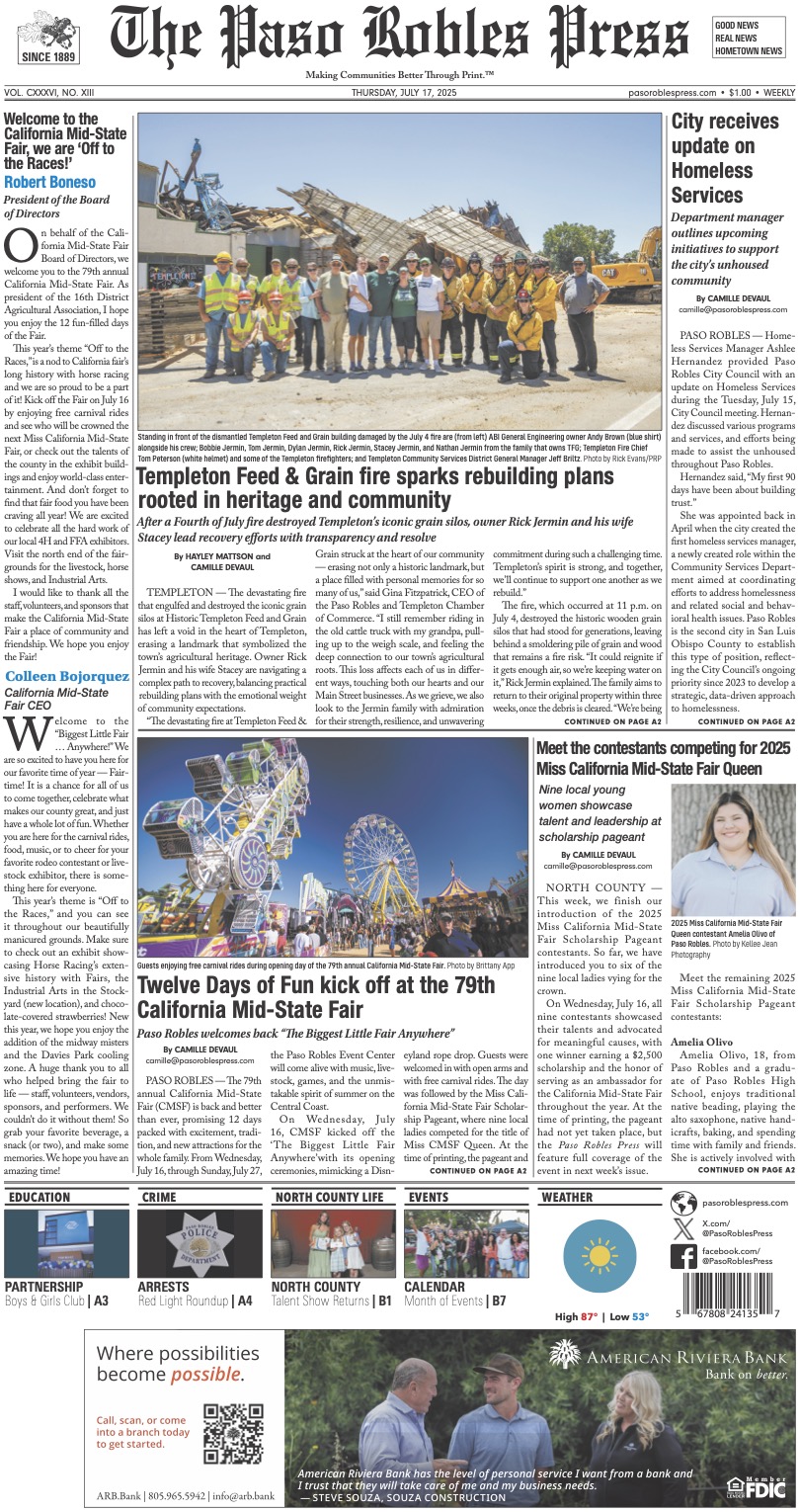They partnered with University of California and Delta Conservancy to study different aspects of water conservation
By Christine Souza
California Farm Bureau Federation
CALIFORNIA — After several multiyear droughts, those connected to water in California are looking at strategies to conserve irrigation supplies and produce crops using less water.
To gain insight, farmers have partnered with the University of California and the Delta Conservancy to study different aspects of water conservation, including the amount of water released from plants, soil and other surfaces to the atmosphere, known as evapotranspiration or ET.
Among those working with the research effort is Lou Biagioni, who farms crops such as corn, sorghum, safflower, wheat, oats and alfalfa in Isleton.
“Any data that I get is going to help,” said Biagioni, who began work with UC and the Delta Conservancy in 2022 after he was awarded grant funding by the state Department of Water Resources for the Delta Drought Response Pilot Program.
Developed by state and local water agencies, the program offers grants for farmers to implement water conservation actions. Steps include planting nonirrigated crops, using deficit irrigation and fallowing fields.
This year, Biagioni received grant funds through the program to plant nonirrigated corn. He also agreed to host monitoring equipment for related research by Kosana Suvocarev, an assistant professor and cooperative extension specialist in biometeorology at UC Davis.
“If I know the amount of evapotranspiration and the hydrology of the soil, I can better time my irrigations and maybe I’ll need to irrigate less,” Biagioni said. “It is all beneficial information.”
This summer, advanced instruments, which Suvocarev likened to “a weather station on steroids,” were erected above the rows of Biagioni’s corn field.
The set-up continuously records weather data, including ET and wind speed. Carbon dioxide uptake by the plant and soil moisture are also recorded.
Although this work is happening in 20 locations across the state, the site is one of six delta farms where Suvocarev and her team of students collect data to study various water conservation strategies affecting water budgets.
“We are measuring in very nontypical conditions to see how we can improve the management of crops to avoid unnecessary losses of water to the atmosphere,” Suvocarev said. “For the delta specifically, because it is such a vulnerable hydrological knot of California, we need to see how to keep that water in the ground” and prevent saltwater intrusion.
Suvocarev and her students measure the water loss of different crops and the carbon exchange between each crop and the atmosphere to evaluate remote-sensing data products. OpenET, for example, is one of several online platforms that uses satellites to estimate water use by crops, and other plants and vegetation.
“This super-pricey equipment (in the corn field) can be very difficult to maintain and install, and we cannot cover every ag field in the state, so we need to help better evaluate those estimates from satellites,” she said. “Often, our measurements are the gold standard to be used to schedule irrigation amounts and timing for crops.”
The satellite products, she said, offer “just an estimation; we do the true measurements from the ground.”
Data collected at the delta farms, including at Biagioni’s corn field, are examined monthly, but Suvocarev said the information will be collected for three years. Three years of data will be more reliable and reflect different hydrological years, she said, adding, “especially differences in winter precipitation and how it impacts spring management.”
“These data will help to inform remote sensing technologies like OpenET, which can be used by the state or individual growers to more accurately estimate consumptive water use on fields across California,” said Delta Conservancy Senior Environmental Scientist Rachel Wigginton. “This improved understanding of the effectiveness of different water conservation practices will help us better understand the outcomes of the Delta Drought Response Pilot Program and could inform future responses to drought.”
California Farm Bureau senior policy advocate Alexandra Biering said there is increased interest from state agencies and nonprofit groups to use remote-sensing products to monitor evapotranspiration and moisture content throughout California.
“In recent years we’ve seen a handful of proposals to establishing a particular method or tool, such as OpenET, as the state or federal standard for collecting evapotranspiration data,” Biering said. “We support farmers, irrigation districts and other agencies having the flexibility and freedom to choose the tools or products they want to use for monitoring evapotranspiration in a way that gives them the best data.
“More information is always better, so we’re looking forward to seeing how this project can help build a complete picture of ET that reflects the diversity of farming operations in California.”
Feature Image: Sacramento County farmer Lou Biagioni meets with Kosana Suvocarev, a research specialist in biometeorology, at his corn field in Isleton. The pair are partnering in using remote-sensing technology in the nonirrigated corn field to track evapotranspiration and evaluate water-saving opportunities. Photo by Christine Souza

